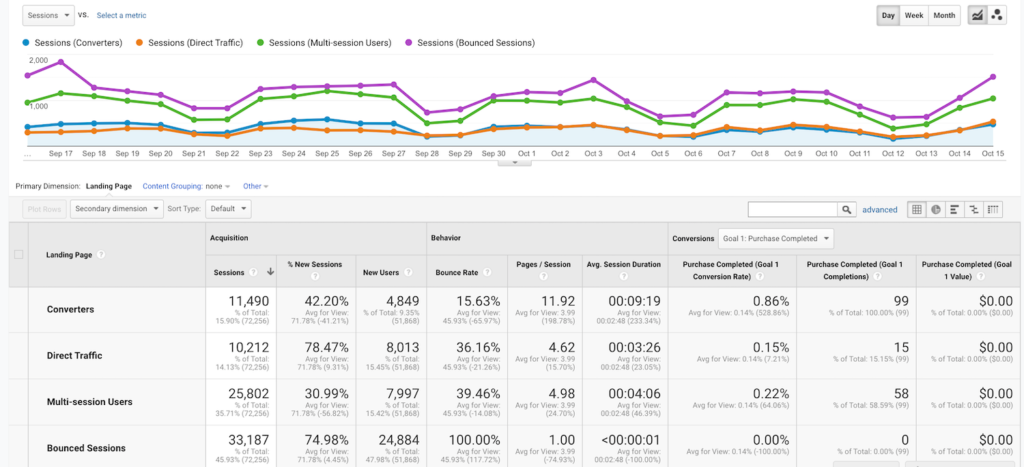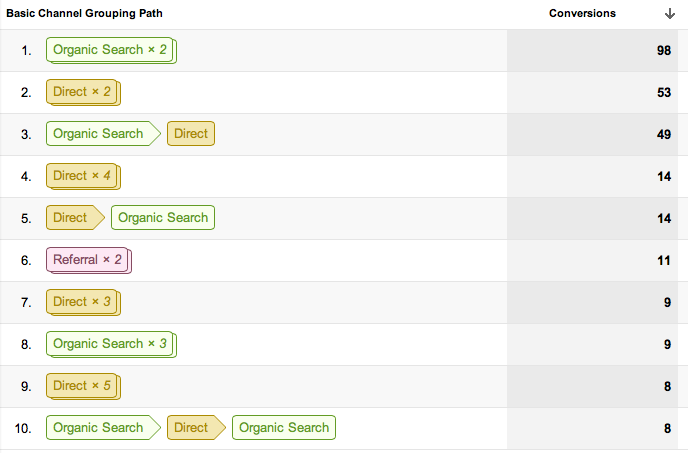What Data Is Google Analytics Goals Unable to Track: A Total Overview
What Data Is Google Analytics Goals Unable to Track: A Total Overview
Blog Article
Demystifying Google Analytics Limitations: Uncover What Information Goals Can not Track
In the realm of electronic analytics, Google Analytics stands as an effective tool that provides valuable insights into website performance and customer habits. In the middle of its capabilities, there exist restrictions that typically go unnoticed. Understanding what Google Analytics can not track is critical for a detailed understanding of data interpretation and decision-making procedures. From the intricacies of user interaction with dynamic material to the complexities of cross-device customer trips, these constraints clarified areas that may continue to be obscured from standard analytics perspectives. By unraveling these restrictions, a clearer picture arises, permitting more informed approaches and refined insights into user interaction and conversions.

Individual Communication With Dynamic Web Content
Customer communication with dynamic content plays a crucial role in comprehending user actions on web sites and maximizing the overall user experience. Dynamic web content describes elements on a website that can transform without the need for a complete web page reload. This consists of interactive aspects such as pop-ups, sliders, forms, and video clips that react to customer actions in real-time. By tracking individual interactions with vibrant content, internet site proprietors can obtain important understandings right into individual interaction, choices, and behaviors.
Google Analytics uses numerous tools to track individual communications with vibrant content, such as event monitoring and digital pageviews. Event monitoring allows you to monitor details user actions, like clicking a switch or watching a video clip, offering data on exactly how users engage with dynamic components. Online pageviews can be made use of to track communications that do not result in a brand-new web page tons, offering a thorough view of user interaction with vibrant material. By analyzing this information, site proprietors can make informed choices to enhance user experience and drive conversions.
Cross-Device User Journeys
Just how can modern-day analytics devices track the facility courses customers take across numerous tools in their online journeys? Cross-device customer journeys present a substantial obstacle for tracking and assessing customer actions accurately. As customers communicate with apps or websites using numerous gadgets such as smart devices, tablet computers, and desktop computers, it comes to be important to understand exactly how they move between these systems to optimize individual experience effectively.
Google Analytics deals with constraints in tracking cross-device user journeys because of privacy issues and technical constraints - what data is google analytics goals unable to track. While it can give understandings into private tools' communications, tracking a seamless customer trip across several devices continues to be an obstacle. This limitation can result in incomplete information and fragmented user insights, making it challenging for services to develop a unified sight of the customer trip
To resolve this concern, companies can utilize innovative analytics devices that use cross-device tracking capacities, enabling them to obtain a more all natural understanding of individual actions. By leveraging these tools, companies can bridge the gap in tracking cross-device customer journeys and enhance their electronic approaches for a seamless user experience.
Offline Conversions and Attribution
As organizations browse the challenges of tracking cross-device customer trips, an additional critical element to think about is the realm of offline conversions and attribution in the realm of data analytics. While Google Analytics supplies important insights right into on-line individual actions, it fails when it concerns tracking conversions that occur offline. This restriction presents a significant obstacle for businesses that have both online and offline sales networks.
Offline conversions, such as purchases made in physical stores or with call centers, are important to comprehending the total consumer trip. Without the ability to associate these offline conversions to details on the internet interactions, businesses might have a hard time to accurately determine the impact of their electronic advertising and marketing efforts.
To address this void, services can discover alternative services such as incorporating CRM systems with on the internet analytics devices or utilizing one-of-a-kind promotion codes that can be mapped back to on the internet projects. By connecting the gap between online and offline information, organizations can obtain a much more extensive understanding of their consumers' actions and boost their total marketing strategies.
Individual Customer Recognition
In the world of information analytics, the ability to accurately determine private customers across different on the internet touchpoints is an essential challenge for businesses seeking to customize and maximize their advertising and marketing methods. While Google Analytics offers valuable understandings into individual habits and communications, it falls short in allowing the recognition of details individuals as a result of privacy issues and technological limitations. Google Analytics makes use of unique identifiers such as cookies to track customer sessions and behavior, however these do not correspond to recognizing private go now users in an individual sense.

Information From Secure Pages
Regardless of the boosting occurrence of safe and secure web pages on websites, getting data from these encrypted sources presents a special challenge for electronic analytics platforms like Google Analytics. Protect web pages, suggested by HTTPS in the URL, secure information traded between the user's internet browser and the website's server to make certain personal privacy and safety. While this file encryption is essential for shielding sensitive information, it likewise positions limitations for tracking user habits and gathering analytics information.
Google Analytics deals with obstacles in accumulating thorough info from safe web pages due to the security methods in position. Therefore, certain data factors such as recommendation sources, keyword searches, and even some customer interactions may not be completely captured when individuals access a website via a safe and secure link. This restriction can impact the precision and completeness of the data analysis, bring about spaces in comprehending customer actions and choices on secure web pages.
To browse this obstacle, electronic experts might require to check out different monitoring methods or take advantage of other tools specifically designed to collect understandings from safe web pages. By adapting methods to suit these limitations, companies can still acquire valuable analytics in spite of the restrictions offered by encrypted connections.
Verdict
In conclusion, Google Analytics has limitations in tracking individual interaction with dynamic web content, cross-device individual trips, offline conversions, specific user identification, and information from safe web pages. These restrictions hinder a detailed understanding of customer actions and might result in gaps in data evaluation. Despite its important understandings, Google Analytics may not offer a complete image of customer involvement throughout numerous touchpoints. It is necessary for businesses useful site to be conscious of these restrictions learn the facts here now and consider auxiliary devices for a more alternative view of their information.
Customer interaction with vibrant web content plays a crucial role in recognizing customer actions on sites and enhancing the overall individual experience. By tracking user interactions with vibrant web content, internet site owners can get valuable understandings into individual involvement, preferences, and behaviors.
Google Analytics utilizes unique identifiers such as cookies to track customer sessions and habits, however these do not correspond to recognizing individual customers in an individual feeling.
As a result, specific information factors such as recommendation resources, keyword searches, and even some user interactions may not be fully recorded when users access a website with a protected link.In verdict, Google Analytics has restrictions in tracking individual communication with dynamic content, cross-device individual journeys, offline conversions, individual user identification, and information from secure web pages.
Report this page